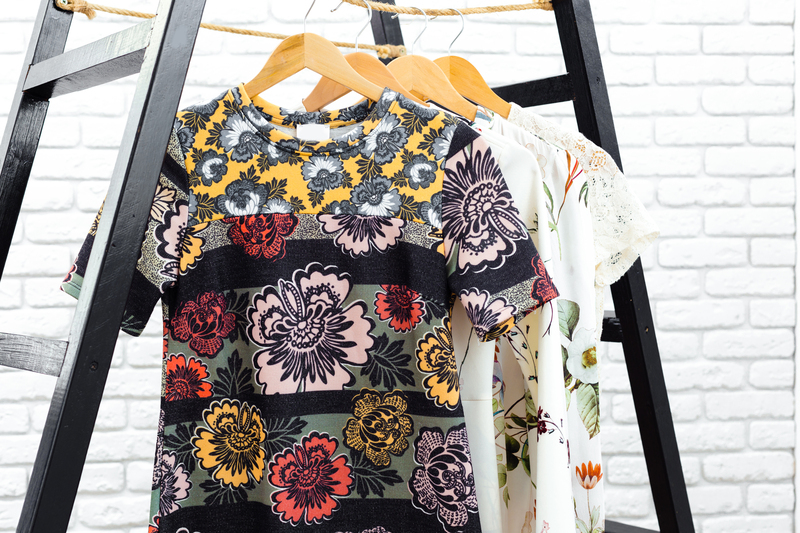Find Out Where to Dispose of Your Pots and Pans Responsibly
Are your old pots and pans taking up space in your kitchen cabinets, collecting dust because you've moved on to a shiny new set? If so, you're not alone! Knowing where to dispose of your pots and pans responsibly is a common yet overlooked aspect of home decluttering and sustainability. In this comprehensive guide, we'll walk you through eco-friendly options, explain why proper disposal matters, and offer actionable steps for repurposing, recycling, donating, or discarding cookware items like saucepans, skillets, and more.
Understanding the Importance of Responsible Pot and Pan Disposal
Many people wrongly assume that worn-out or damaged cookware should simply be thrown away. However, responsible disposal of pots and pans helps reduce landfill waste, conserves resources, and can support charitable organizations or local communities.
- Sustainability: Disposing cookware responsibly minimizes environmental impact by promoting recycling and reuse.
- Community Impact: Donated items help families in need and support non-profit organizations.
- Legal Compliance: Some municipalities have guidelines regarding metal disposal and accept certain kitchen items at recycling centers only.
Whether your goal is to declutter or champion sustainability, it's essential to learn how and where to dispose of pots and pans to make an impactful choice.

Assessing the Condition of Your Pots and Pans
Before you start searching for places to dispose of old cookware, inspect each item. Different disposal or reuse avenues apply depending on whether your pans are gently used, heavily worn, or irreparably damaged.
Gently Used or Like-New Cookware
- No severe rust, scratches, or dents
- Handles and lids fully functional
- Nonstick coating intact
Heavily Used, Damaged, or Nonstick Cookware with Flaking
- Significant damage (warping, rust, missing handles)
- Coatings flaking or peeling
- Bent, cracked, or otherwise unusable
By sorting your pots and pans based on condition, you can choose the most conscious and practical disposal or reuse method.
Recycling Options: Where to Recycle Pots and Pans
1. Municipal Recycling Centers
The metal in pots and pans is recyclable, but where to recycle old pans generally depends on your local municipality's policies. Most centers accept aluminum, stainless steel, and sometimes cast iron cookware.
- Contact your local recycling center or check their website for guidelines regarding scrap metal drop-off.
- Remove *plastic handles* or non-metal parts before recycling, unless indicated otherwise.
- Clean pans to remove oil, leftover food, or residue.
- Deposit your old pots and pans for recycling in the designated scrap metal bin.
2. Scrap Metal Yards
Scrap yards will often accept old cookware--even if it's damaged or missing handles--due to its recyclable metal content. This is a perfect solution if your local curbside option doesn't accept household metal items.
- Search online for "scrap metal recycling near me" or "where to dispose of metal pans".
- Bring your items to the yard; some pay a small fee based on weight.
- Scrap yards accept a variety of metal cookware: stainless steel, aluminum, copper, and cast iron.
3. Retail Take-Back Programs
Some brands and retailers run take-back or trade-in programs for old cookware:
- Bed Bath & Beyond has hosted recycling events in some locations.
- GreenPan and other eco-conscious brands occasionally offer discounts when you exchange old items.
- Check with your favorite kitchenware store for upcoming recycling initiatives.
Donating Used Pots and Pans
If your cookware is in good, usable condition, consider donation as one of the most impactful answers to "where to dispose of old pots and pans responsibly."
1. Local Charities and Non-Profits
- Goodwill, Salvation Army, and Habitat for Humanity ReStores often accept gently used kitchenware.
- Some local food banks and shelters provide cookware to families transitioning into new homes.
- Always call ahead to confirm accepted items and drop-off times.
2. Community Centers and Schools
- Cooking classes or school home economics departments may welcome extra pots, pans, or bakeware.
- Community centers sometimes run free kitchens or offer classes for residents in need.
3. Online Freecycle or Buy Nothing Groups
- Post your available cookware on Freecycle networks, Facebook Marketplace, Craigslist, or Buy Nothing Project groups.
- These hyperlocal platforms often connect you directly with individuals in need--providing a second life for your old kitchen items.
Donation Considerations
- Only donate pots and pans in safe, usable condition (no severe rust, nonstick flaking, or missing parts).
- Wash and dry all items before donating.
- Remove any personal labels or markings.
Creative Repurposing: Upcycling Old Pots and Pans
If you're passionate about reducing waste, consider giving old cookware a new lease on life by upcycling. Here are some creative ways to reuse non-recyclable or sentimental pans:
- Outdoor Planters: Drill holes for drainage and fill with soil for unique herb or flower planters.
- Birdbaths or Feeders: An old saucepan on a pedestal makes a charming garden addition.
- Storage Bins: Use deep pots for storing pet food, gardening tools, or craft supplies.
- Wall Art: Arrange vintage pans or lids in a display for rustic kitchen decor.
- Candle Holders or Lamps: Turn a worn frying pan into a trendy, upcycled light fixture!
Upcycling is not only eco-conscious but can add character and functionality to your home or garden.
Disposing of Non-Recyclable or Hazardous Cookware
Not all pots and pans are safe to recycle or donate. Some materials, like Teflon or other nonstick coatings, may be classified as hazardous once they begin deteriorating. Here's how and where to get rid of non-recyclable cookware:
- Check Local Sanitation Guidelines: Many municipalities have strict policies regarding Teflon and other coatings.
- Some waste management programs offer occasional household hazardous waste (HHW) collection events - this is often the safest way to dispose of items containing deteriorating coatings.
- If no other option is available, these pans may go in the regular trash--but always confirm with local authorities to avoid contamination or fines.
Examples of Non-Recyclable Cookware
- Pans with damaged or flaking nonstick surfaces
- Multi-material items that can't be separated (metal fused with plastic, wood, or glass in a way that can't be removed)
- Enameled or ceramic-coated pans (check with your recycler; some accept, some don't)
Responsible Pot and Pan Disposal: Step-by-Step Guide
Finding where to dispose of your pots and pans responsibly is easier when you follow a systematic approach. Here's a summary checklist:
- Sort by Condition: Decide if your pots and pans are suitable for donation, recycling, upcycling, or trash.
- Research Local Options: Contact recycling centers, charities, or waste management facilities to check eligibility.
- Prepare Items: Clean thoroughly, remove non-metal parts (for recycling), and package for transport.
- Deliver or Arrange Pickup: Drop off items at the appropriate location or schedule a pick-up with donation groups.
- Explore Upcycling: If items are non-recyclable, get creative with DIY projects instead of landfilling.
Frequently Asked Questions about Pots and Pans Disposal
Can all types of pots and pans be recycled?
No. Stainless steel, aluminum, cast iron, and copper pans are generally recyclable, but check for coatings or plastic parts. Nonstick, ceramic, or enamel-coated items may not be accepted at all facilities.
Why can't I put frying pans in my curbside recycling?
Most curbside programs don't accept pots or pans because their material or size can damage sorting equipment. Always use scrap metal drop-off points or dedicated recycling centers.
Where should I dispose of pans with Teflon/nonstick coating?
Contact your waste authority for household hazardous waste collection events or disposal instructions. Do not place these in your recycling bin unless explicitly allowed.
How can old cookware help my community?
High-quality donations support families in need, help fund non-profits, and keep functional products in use instead of in landfills.

Responsible Disposal: The Key to a Greener Kitchen
Choosing the right destination for your old pots and pans makes a meaningful environmental impact. By thoughtfully considering where and how to dispose of cookware, you reduce waste, promote recycling, help others, and may even add beauty to your home through creative projects. Whether you choose recycling, donation, upcycling, or proper hazardous waste disposal, your efforts contribute to a more sustainable and responsible world.
Start today--sort through your cupboards, research your local options, and take the first step toward greener living!
Need More Help? Many municipal websites provide recycling and responsible cookware disposal guides. If you're unsure, always call your local waste management office--they're there to help you do the right thing for your home and the planet.
In Summary: Where to Dispose of Your Pots and Pans Responsibly
- Donate if your cookware is in good condition.
- Recycle metal pots and pans at scrap yards or recycling centers.
- Drop off non-recyclable or hazardous cookware at approved facilities or during community collection events.
- Get creative with upcycling for sentimental or damaged items.
Whatever method you choose, your conscious approach helps build a cleaner, safer, and more sustainable kitchen and community. Make sure to always check local resources, and spread the word about responsible pot and pan disposal!
